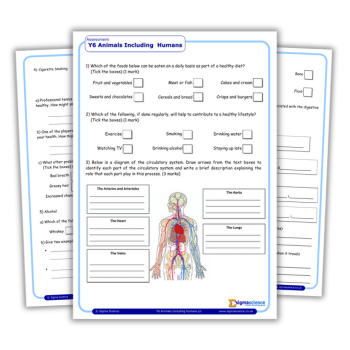The new Interim Teacher Assessment Framework (ITAF) changes explained

Changes to the ITAF have led to confusion for Y6 teachers, but fear not – Tim Roach is on hand to help

- by Tim Roach

Ever since levels were consigned to the education dustbin, Y6 teachers have been living la vida loca – or ‘life after levels’ as it’s sometimes called.
Three years down the line and you’d think we’d be getting pretty good at it: our senses have become more finely attuned to what the expected standard (EXS) looks like, while our appreciation of that elusive greater depth (GDS) has developed a connoisseur-like perception.
When it comes to assessing writing, teachers have been treated to various iterations of exemplifications and clarifications, as well as various STA (Standards and Testing Agency) webinars and explainer videos.
The interim teacher assessment framework (ITAF) has undergone modifications or clarifications each year since it was introduced in autumn 2015 – although famously, the exemplifications as to what these actually looked like in terms of children’s writing did not appear until the following spring.
These changes have compounded the issue of year-on-year comparison, and this year, the third iteration of the ITAF has the potential to be even more misunderstood than before.
Add to this the high stakes of school accountability, plus a moderation system that is unloved to say the least, and the result has all the makings of inter-profession strife.
Verifying judgements
Time to hold my hands up: I was a moderator last year. However, in mitigation, I was also a Y6 teacher who was moderated the year before, so I’ve experienced the process from both sides.
Each local authority is duty-bound to moderate 25% of its schools. The moderators must view an assortment of at least 15% of selected schools’ cohorts (five pupils out of a class of 30, seven out of 45, nine out of 60, etc), therefore the number of moderated pupils is a tiny fraction of all of the country’s 11-year-olds.
It’s likely that most moderators will be serving Y6 teachers or experienced teachers nonetheless. The STA now requires moderators to sit compulsory tests in an effort to standardise the vaguely subjective task of assessing writing.
Ultimately, the moderators are there to verify the teachers’ judgements, rather than to seek to undermine fellow professionals.
That said, if they cannot find the evidence of all the bullet points in a particular standard, they are expected to expand the sample of pupils to be moderated.
This year, a number of changes to the ITAF have led to another round of confusion. As far as the STA is concerned, the standard of writing to reach EXS or GDS remains the same.
Tellingly, it hasn’t released any different exemplification materials, but has revised the original set to reflect the ITAF changes.
So Morgan is still the one to look at for EXS (a level 4b in old money) and Frankie – Ballet Shoes and trips to the Globe et al – remains the gold standard for a strong GDS candidate.
Punctuation marks
Probably the most significant change is that now not all punctuation marks must be evidenced for EXS.
From a workload perspective, this is helpful.
Too many teachers have spent long hours combing writing for lesser-spotted punctuation marks (such as hyphens) and too many pupils have been told their writing isn’t at the expected standard because they don’t tend to use all of the punctuation arbitrarily listed on the former ITAF.
In addition, some bullet points which consisted of grammatical lists have been merged, moved or deleted altogether.
Last year, teachers would have looked at the STA exemplification materials for ‘managing levels of formality’ and then taught texts that encouraged this, such as combination texts (letters which included diary extracts from another persona, for example) or newspaper reports where spoken dialect differences were evident in witness statements.
Tellingly, the revised GDS standards now include a separate bullet point, specifying that pupils should ‘distinguish between the language of speech and writing and choose the appropriate register’.
This suggests that the whole composition of GDS writers will be more nuanced and evident across their writing, rather than simply in the scenarios above.
Particular weakness
It is with the new ‘particular weakness’ term where misunderstandings about whether the ITAF is now best fit or secure fit seemed to emanate. The STA has produced case studies that seek to explain this.
As a rule of thumb, a ‘particular weakness’ should extend to one bullet point only, and teachers must have ‘good reason’ to believe that this is a single exception to the child’s overall attainment.
The STA’s own training materials mention dyslexia and dyspraxia, which may affect a pupil’s ability to meets the spelling and handwriting standards respectively, but this is very much on a case-by-case basis.
So have the goalposts been moved? Well, the revised ITAF is supposed to be ‘a more flexible approach’, with a greater emphasis on composition and effect, and we now know that it will remain the same next year and ‘onwards’, the STA somewhat cryptically admit.
Indeed, the already-published 2018/19 ITAF explicitly states that assessments ‘will not be directly comparable’ with previous years.
How long this may continue is anyone’s guess, despite previous warm words from Nick Gibb about comparative judgement being ‘a potential future’ for the assessment of primary writing.
How to prepare for moderation
- Download the revised exemplification materials as your guide, especially Morgan for EXS.
- To help assess the spelling standards, use the national curriculum word list for Y5 and 6.
- Tick sheets are not required. However, as a teacher, I would want to be secure in my own judgements and feel able to show the moderator where a pupil had demonstrated any particular aspect within the standards.
- Continue to use best practice for teaching writing: modelling, shared writing, success criteria or toolkits, and editing. In time, withdraw these tools to ensure pupils are writing independently.
- Cherish teaching writing, seriously. It is a privilege to be able to introduce these young people to literature and seek to inspire them to express themselves creatively and for a range of purposes.
Tim Roach is a Y6 teacher at Greenacres Primary, Oldham. Follow him on Twitter at @mrtroach.










